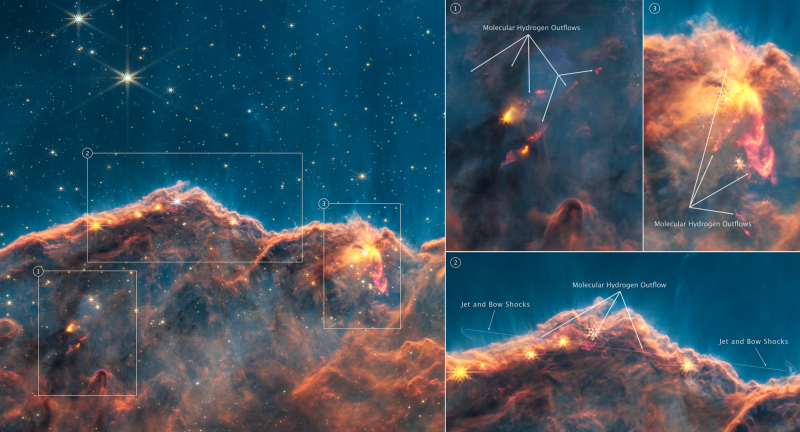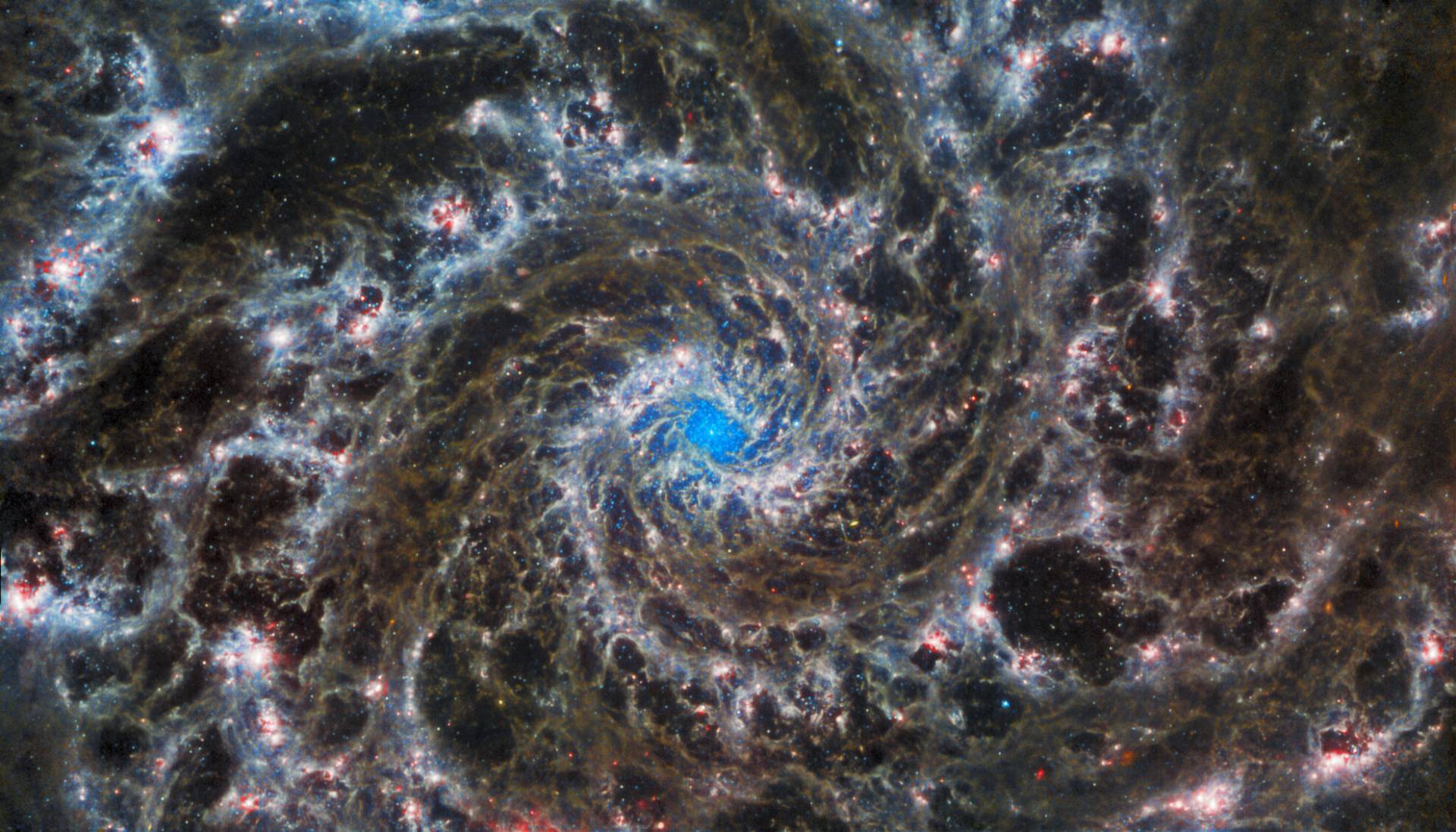This year the most powerful space telescope ever assembled brought us breathtaking images of galaxies from billions of years ago. We kick-started the first moon mission in 50 years and altered the orbit of a planetary object for the first time ever. Here’s a recap of some of the best space accomplishments of 2022, according to KQED’s Danielle Venton, and Ben Burress, astronomer with Chabot Space and Science Center and longtime contributor to KQED’s website.
1. James Webb telescope released spectacular images of nebulae and galaxies
It’s been almost a year since Webb, the largest-ever space telescope, launched and began sending back spectacular images of the cosmos. And since July, we’ve been stunned by images of fledgling stars and the ancient universe, taking us as far back as 400 million years after the big bang. The Webb telescope has revealed the complexity of distant galaxies, observed extrasolar planets and detected the presence of water vapor and carbon dioxide in the atmospheres of two exoplanets — telltales of possible life beyond Earth. From Jupiter’s aurora, Neptune’s rings and Saturn’s moon to merging galaxies, here’s a collection of some fascinating Webb images that awed us this year. — Danielle Venton and Ben Burress

2. NASA’s DART mission crashed a spacecraft into an asteroid
In September, NASA crashed a 1,200-pound spacecraft into an asteroid system called Didymos to test the possibility of deflecting an asteroid headed for earth. The goal of the mission was to change the trajectory of the asteroid by giving it a little nudge, pushing it off course and away from Earth. NASA announced that the Double Asteroid Redirection Test (or DART) mission, the first test of its kind, successfully altered the orbit of the asteroid by 32 minutes, giving scientists hope for the future of planetary defense of Earth.
— Ben Burress
3. Artemis kick-starts mission to the moon
NASA’s launch of Artemis 1 in November revived the space agency’s “Moon to Mars” initiative by sending the Orion, an uncrewed spacecraft, to orbit the moon for six weeks. On Dec. 11, the capsule returned from its flight around the moon, splashing down a few hundred miles south of San Diego. The success of Artemis 1 will lay the foundation for the next stages of the Artemis program, which will rely on SpaceX, Elon Musk’s rocket company, to build a moon lander for astronauts. The Artemis program aims to return humans to the moon in 2025 to learn about how humans can survive in space. — Danielle Venton
4. Black hole: Images and sounds
In May, an international team of astrophysicists and researchers working with the Event Horizon Telescope successfully captured the first image of our galaxy’s central, supermassive black hole. They did this by positioning eight observatories around the world, working together as one huge radio telescope. The discovery comes three years after the team released the first-ever image of a black hole in the center of galaxy Messier 87. In other black hole news, we also heard, for the first time, the sounds of a black hole in the Perseus cluster in the eeriness of the sound waves carried through hot gasses in the galaxy. — Ben Burress
5. China sends astronauts to its very own space station
In November, China sent Fei Junlong, Deng Qingming and Zhang Lu on the Shenzhou 15 mission to their recently completed, three-module space station called Tiangong. During this six-month mission, the taikonauts, as the Chinese call astronauts, will conduct three or four spacewalks and more than 100 experiments. The Tiangong, which means “celestial palace” in Mandarin, is the second space station in orbit next to the International Space Station.
—Danielle Venton
What are some of the space and astronomy news you’re looking forward to in 2023?
